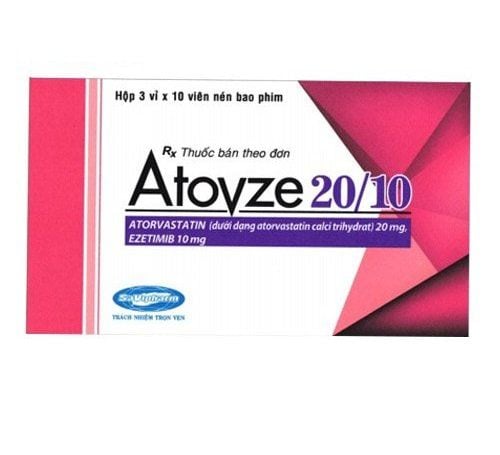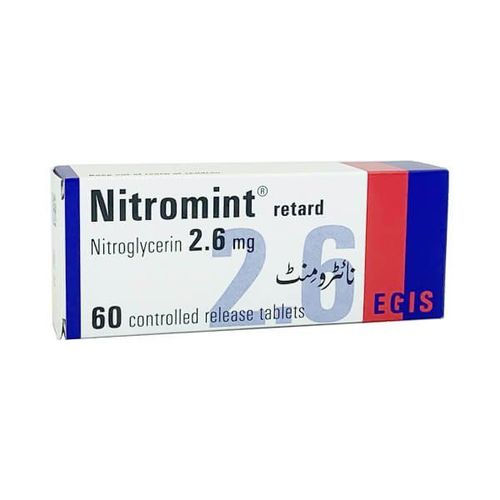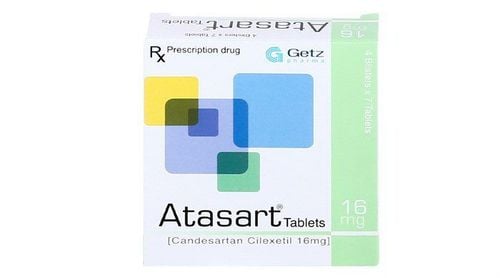This is an automatically translated article.
Coversyl is a blood pressure medication, formulated in different strengths to increase the response to lowering blood pressure. To learn more about the uses and uses of Coversyl, please refer to the article below.1. What is Coversyl?
Coversyl contains the active ingredient perindopril, which belongs to the group of ACE inhibitors. Medicines are prepared with different strengths, What is Coversyl 5mg? It is Coversyl with the active ingredient Perindopril 5mg. Coversyl 10mg contains the active ingredient Perindopril 10mg. In addition, it is also available in combination with other drugs such as diuretics, calcium channel blockers,...Perindopril is an ACE inhibitor. This ACE converts Angiotensin I to Angiotensin II, whereby Perindopril also blocks angiotensin I into angiotensin II. Angiotensin II is a potent vasoconstrictor that promotes the growth of smooth muscle cells of blood vessels and the heart. It also has the effect of retaining water and salt, thereby causing an increase in blood pressure. This is a major mechanism of hypertension in patients with essential hypertension. In addition, because it inhibits ACE, it also inhibits the enzyme bradykinin in the lungs, which can cause a cough reflex.
In hypertensive patients, Perindopril has a gentle, long-lasting effect on lowering blood pressure with little risk of excessive lowering. It lowers blood pressure by dilating arteries and veins and reducing systemic peripheral resistance. Normally, when used, blood pressure can be brought back to normal within 1 month and stabilized with long-term treatment.
2. Uses of Coversyl
Coversyl is used in the following cases:Patients with mild to severe hypertension. Symptomatic treatment of heart failure. The patient with coronary artery disease has been treated stably. Reduces the risk of cardiovascular events in patients with a history of myocardial infarction and/or revascularization. Note that the drug is contraindicated for use in the following cases:
Allergy to Perindopril or to any other ingredient of the drug. There is a history of angioedema causing difficulty breathing, swelling of the face, ... when taking ACE inhibitors before, idiopathic or hereditary angioedema. Concomitant use of Coversyl with products containing aliskiren is contraindicated in patients with diabetes or renal failure with a glomerular filtration rate <60ml/min/1.73m2. Pregnant women: Contraindicated for pregnant women in the second and third trimesters of pregnancy. Women during lactation.
3. Dosage and how to use Coversyl
How to use: The drug is taken orally, taken with water, should be taken at the same time of day.Dosage: Dosage of Coversyl should be based on the individual patient and blood pressure response.
Hypertension: Coversyl can be used alone or in combination with other antihypertensive agents.
The recommended starting dose is Coversyl 5mg once daily in the morning. For patients with a highly active renin-angiotensin-aldosterone system, for example, hypertension due to renal artery stenosis, salt depletion, hypovolaemia, decompensated heart failure, etc., hypotension may occur. strong after the first dose. The recommended starting dose of 2.5 mg in these patients should be under medical supervision. Dosage may be increased to 10mg (one Coversyl 10mg tablet) once daily after approximately 1 month of treatment. Elderly patients should start with 2.5 mg and gradually increase the dose to 5 mg after approximately 1 month, then 10 mg if necessary. Symptomatic heart failure: Usually in combination with other drugs, the recommended dose is 2.5mg per morning. Dosage may be increased to 5mg once daily after 2 weeks if tolerated. This adjustment of dose should be based on the clinical response of the individual patient and medical supervision to avoid the risk of hypotension. In patients with severe heart failure or patients with risk factors for excessive hypotension such as impaired renal function, patients using concomitant diuretics, vasodilators,... initial treatment should be under medical supervision.
Stable coronary artery disease:
Coversyl should be started at an initial dose of 5 mg daily for two weeks, then increased to 10 mg once daily, depending on renal function and if 5 mg is tolerated good loading. Elderly patients: Initial dose is 2.5 mg once daily for the first week, then 5 mg once daily for the following week and then may be increased to 10 mg once daily depending on renal function. For patients with renal impairment: The dose of Coversyl in patients with renal impairment should be adjusted based on creatinine clearance.
Creatinine clearance ≥ 60: Use 5mg/day. Creatinine clearance 30 to less than 60: 2.5 mg/day Creatinine clearance 15 to less than 30: 2.5 mg every 2 days Patients on hemodialysis or less than 15 creatinine clearance: 2.5 mg daily Hemodialysis Patients with hepatic impairment: No dose adjustment is required in patients with hepatic impairment.
Children: The safety and effectiveness of perindopril under 18 years of age have not been established and should not be used.
4. Possible side effects when using Coversyl
Similar to other high blood pressure medications, Coversyl can also cause unwanted side effects. Some undesirable effects of the drug include:Dry cough: A dry cough is one of the most common side effects of Coversyl or other ACE inhibitors. When experiencing this situation, the patient needs to rule out other causes of cough such as sore throat, flu and contact a doctor for treatment. In some cases, the patient will need to reduce the dose or change the medication. Excessive hypotension: Sometimes starting a dose of the drug can cause this. Manifestations include headache, dizziness, tinnitus, blurred vision,... These symptoms mostly appear when the patient first uses the drug or when the dose is increased. Symptoms are more severe in people who are on a bland diet, completely eliminating salt, dehydration due to diarrhea, fever, vomiting, etc. To avoid excessive lowering of blood pressure, doctors often recommend The patient takes the first dose of the drug at bedtime. Angioedema: Causes manifestations such as swelling of the face, tongue, larynx, throat, ... This is a serious side effect that can also occur when taking Coversyl or drugs in the ACE inhibitor class, although It is very rare, but when this happens, the patient needs to stop taking the drug and inform the doctor for treatment. Neutropenia or agranulocytosis, thrombocytopenia, and anemia have been reported in patients receiving ACE inhibitors. Hyperkalemia: This is a common side effect of ACE inhibitors, so do not add extra potassium when taking the drug. In addition, patients may also experience some other side effects such as digestive disturbances, nausea and vomiting, loss of taste, liver dysfunction, kidney function disturbances, blood index disorders, etc. ...
5. Notes when using Coversyl
Some special notes when you use Coversyl need to know, including:Before taking the drug, you should inform your doctor about your medical history such as blood diseases, heart valve disease, kidney failure, ... and your medical history. previous history of drug allergy. When taking drugs, do not increase or decrease the dose or stop using the drug without the consent of the treating doctor. If during treatment there is unstable angina, which may occur during the first month of treatment with perindopril, a careful benefit-risk assessment should be made before continuing treatment. ACE inhibitors can cause hypotension, especially in the early doses. Symptoms of hypotension are rarely observed in uncomplicated hypertensive patients. Symptomatic hypotension usually occurs in patients with reduced blood volume, such as those on diuretic therapy, dietary salt restriction, diarrhea or vomiting, patients with severe hypertension who are dependent on high blood pressure. renin, hemodialysis. Severe untreated hypotension can cause myocardial infarction, cerebrovascular accident, ... when feeling dizzy after taking the drug, you should lie down and may need to receive fluids. Limit this by taking the first dose in the evening. As with other ACE-inhibitors, Coversyl should be used with caution in patients with mitral stenosis and conditions that obstruct left ventricular outflow, such as aortic stenosis or cardiomyopathy. hypertrophy. Hyperkalemia has been reported in some patients receiving ACE inhibitors, including perindopril. Risk factors for increased hyperkalemia include renal failure, decreased renal function, older age (>70), diabetes, dehydration, metabolic acidosis, and concomitant use of diuretics. potassium (such as spironolactone, triamterene or amiloride), potassium supplements and salt substitutes containing potassium; or patients taking other drugs that increase serum potassium. Hyperkalemia can cause serious arrhythmias, sometimes leading to death. Therefore, in high-risk patients, the drug should be used with caution and with frequent monitoring of serum potassium. Avoid taking potassium supplements or foods high in potassium while taking this medicine. In diabetic patients taking oral medications or insulin, blood glucose should be closely monitored during the first month of initiating treatment with ACE inhibitors. Drug Interactions: Avoid combining Coversyl with drugs such as lithium, potassium-sparing diuretics, dual blockers of the renin-angiotensin-aldosterone system (RAAS) because of the increased risk of hypotension, hyperkalemia, and functional impairment. kidney; ACE inhibitors and angiotensin II AT1 blockers should not be used concurrently in patients with diabetic nephropathy. Pregnancy: It is best not to use ACE inhibitors during pregnancy. Unless it is absolutely necessary to continue treatment with ACE inhibitors, patients planning pregnancy should be switched to other antihypertensive treatments that are safe to use in women. pregnancy has been proven. In case of overdose of this drug, the drug has a risk of causing hypotension, you need to monitor your own symptoms and need to go to the nearest medical facility to have your blood pressure adjusted in time. If you forget to take your medicine, take it as soon as you remember. Do not double the dose the next day. You should schedule your blood pressure medication to avoid forgetting to take your blood pressure medication. Due to the presence of lactose in the excipients, patients with rare hereditary problems of galactose intolerance, glucose-galactose intolerance or the Lapp lactase deficiency should not take this medicine. Store the medicine in a cool place, away from direct light and out of reach of children. The above are the characteristics and uses of Coversyl, the drug is used under the direction of a doctor. Do not self-medicate and if there is anything you do not understand, consult your doctor.
Please dial HOTLINE for more information or register for an appointment HERE. Download MyVinmec app to make appointments faster and to manage your bookings easily.













